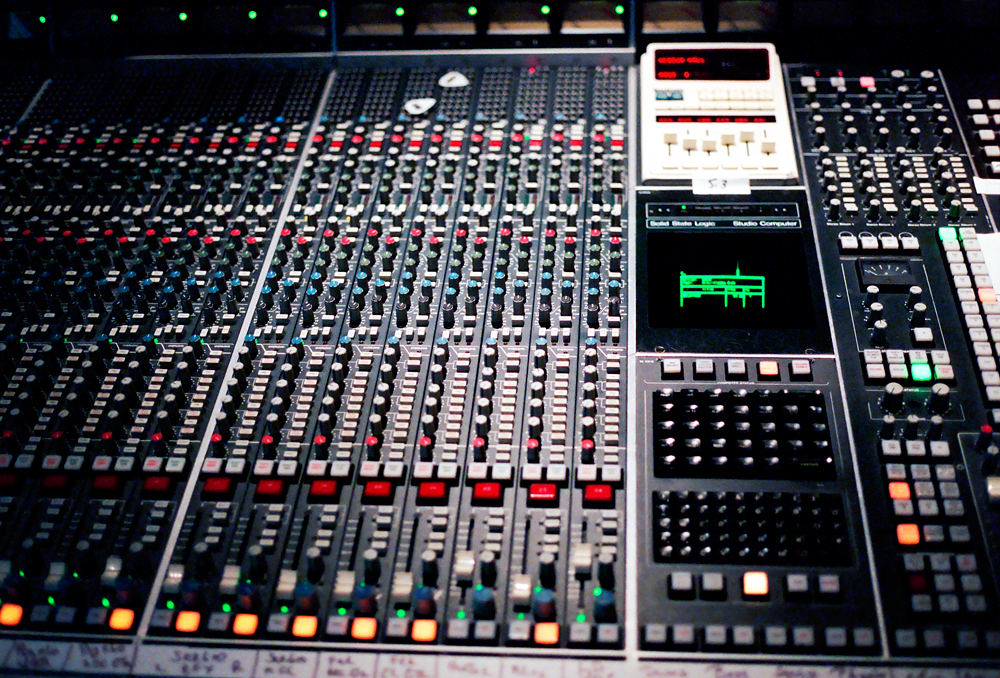At the most basic level, an audio mixer combines multiple signals and routes them to a common output for recording or amplification through a sound reinforcement system. “Signals” are those sounds captured by microphones or received from electric instruments.
Also called a “console,” “board,” or “desk,” mixers range from straight-forward tabletop devices to the large-format giants found in many professional recording studios. Varieties of audio mixers are used for music production, live sound, film/television audio, and broadcast.
At a Glance: Audio Mixer Types
An audio mixer can be fully digital, analogue with digital audio interfacing, or true analogue. Digital boards are especially favored in live sound for their automated mix recall capabilities and savable mix templates, in which every knob, fader, button, and switch position can be “recalled” in an instant. High-level touring bands, for example, might request a particular board in their rider, or bring their own to each venue. The band’s personal FOH engineer may then simply recall a template and make minor mix adjustments to better suit the room each night. With automated recall, digital consoles are just as convenient in the studio, too.
Fully digital mixers may also utilize “fader layering.” For instance, a board with only 32 physical faders might actually handle 96 total input signals on 3 separate layers. In this case, a single fader is responsible for controlling more than one input signal.
Analogue mixers with digital audio interfacing receive and process input signals in the analogue realm, and allow for direct DAW integration at the output stage. True analogue consoles offer no digital capability; in order to record, the mixer’s direct outputs must be connected to the user’s recording device. Likewise, analogue mixers lack the seamless automated recall found in fully digital boards; however, they are often lauded for their tonal capabilities with many being “legacy” consoles, like the Neve 88RS in Studio 1 at Abbey Road.
While the differences between, and various uses of, audio mixers might seem overwhelming at first, learning how to operate any of them begins at the channel strip.
Truly, the key to understanding an audio mixer starts by becoming familiar with its channel strip. All mixers share a similar set of features and layout; once this is understood, it’s possible to transfer knowledge from one console to another. A typical audio mixer channel strip is structured as follows:
Input, Equalization, and Dynamics
The preamp on a mixer contains an XLR input with a gain/trim pot to adjust level. Here, either a mic or line level signal can be chosen as the signal source. Higher output instruments, like electric guitars, are line level if recording direct. Lower output signals, like microphones, are aptly referred to as mic level signals.
Some units also feature a pad generally ranging from -10 to -20dB for louder sound sources, like snare drums. Many additionally have a polarity reversal switch to eliminate phase issues when two mics are used on the same source. +48V phantom power is often found in the input section to power active DIs or microphones, and a high pass filter somewhere around 80 Hz may be found here as well.
The EQ section of the channel strip is most commonly of the 4-band parametric or semi-parametric variety. A smaller audio mixer will typically have high and low shelving EQs, and high-mid and low-mid bands with selectable frequency and boost/cut.
Large-format consoles, like the SSL Duality, contain a dynamics processing section with a compressor/limiter and gate/expander. Small units do not have a dynamics section.
Aux Sends, Pan Pot, and Channel Fader
Auxiliary sends are used to route input signals to other destinations. Commonly, these destinations are monitor, or “cue,” mix sends and time-based effects sends. When an aux send is set to pre-fader, any adjustment made to the channel fader will not effect the send. This is typically reserved for cue mixes where artist preference is paramount. A post-fader send reacts to the channel fader and is used to preserve the wet/dry signal balance when using time-based effects like reverb or delay.
At the bottom of each channel strip is the universally recognizable fader. Faders are resistors controlling the amount of signal that is “let through,” and the pan pot positioned above it places a signal in the stereo field.
Of course, mute/solo buttons are included near the fader, much as how we’re accustomed to seeing in virtual DAW channel strips.
In a nutshell
All mixers have similar functions and contain select features relevant to mixing audio. XLR inputs and preamps with adjustable trim, EQ, aux busses, pan pots, and faders are the requisite features of every audio mixer, while higher-end large-format consoles may have an additional dynamics section as well.
The important takeaway is that mixers are powerful tools, allowing us to record or mix audio for music production, film & television, live sound, broadcast, or any other situation involving multiple audio signals.
While not a compulsory piece of home studio equipment, tactile control surfaces and oftentimes desirable preamps ensure the audio mixer’s longevity in an increasingly “in-the-box” world.
